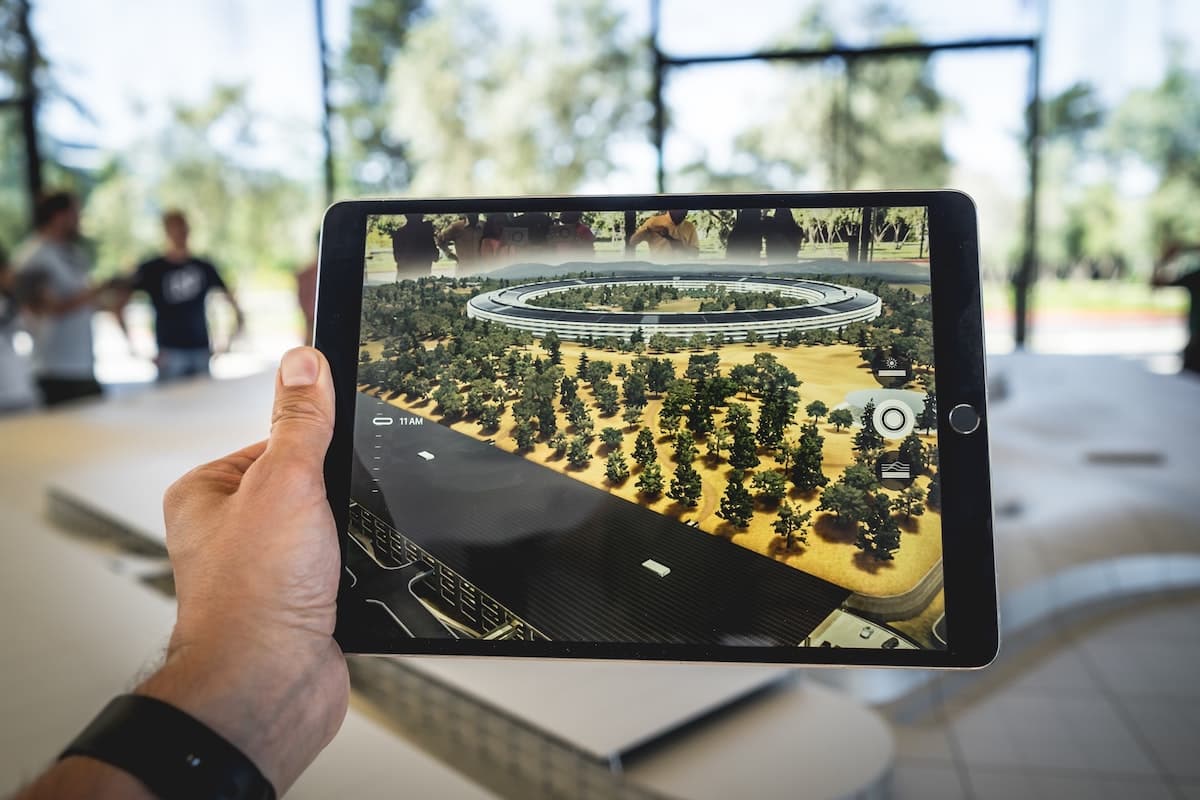Table of Contents
Augmented reality (AR) technology continues to transform the user experience in a variety of industries. Many businesses offer virtual try-ons that allow you to understand how you might look in clothes offered for sale or when wearing makeup, or even AR view solutions that could show you more details about what you may find walking down the street. These are all examples of how you can turn an ordinary interaction with your business into an exciting interactive one.
If you are ready to implement immersive technologies, let’s analyze what development vectors AR can open for you and where to start an AR project.
Benefits of Adopting Augmented Reality
The uses of AR in many businesses are only limited by your imagination. It is more powerful to demonstrate your business using AR than to try to influence your customers with an advertisement. Using an AR application is much more interesting and can be very fun for customers.
Think of AR as a guide that is interactive and compelling. An AR application improves customer engagement and brand awareness. You can build an AR environment to let your customers try a product before they buy it. They can also test drive a new vehicle or view the interior and exterior of a home for sale. Construction and renovation can even be presented with AR overlays on a construction project site.
AR provides an immersive experience that now is a part of the metaverse trend. AR presentations, such as personalized training programs, may be customized for individual users. AR avatars and digital collectibles in augmented reality allow you to transfer real-world objects to the virtual world and expand your market presence to new innovative platforms.
The real advantage of AR technology is that you do not need to use any specialized headset to enjoy it. An AR experience can be accessed using a mobile device or viewed on a regular computer screen.
How to Start an AR Project
Here is a checklist of the key steps for implementing an AR project.
Choose Platforms for Your AR Application
The platform you choose may be iOS (Apple devices), Android, or both (cross-platform). The platform affects the choice of the development tools used for the AR application. You need to provide the right level of accuracy and performance, so choose to rely on the needs of your target audience.
Make Lists of The Features You Want to Add
How do you want your AR experience to start? Would you like the AR overlay to appear when hovering over a specific object, by a predefined location, from user interaction, or possibly another trigger? The logic of your application must be clear and correspond to the features and performance of the chosen platform.
Choose the Best AR Development Platform
The tech stack for building AR solutions depends on the list of features you want to implement. For example, ARKit will help in the development of AR for iOS, and ARCore is a tool that will allow you to create an AR-powered app for Android. These platforms have different capabilities, so you should take this into account when planning the implementation of the planned features.
Involve Experienced AR Developers
If you have no previous experience with the implementation of AR, it is better to enlist the support of experienced AR application developers.
Of course, there are some AR features that you can easily create yourself using existing platforms, such as face filters, but they will not provide the proper wow effect that is specific to your brand and may not be very useful for your business.
For more complex projects, like a virtual try-on, user manuals, and indoor navigation, you need a team of AR developers that will help you choose appropriate augmented reality development tools and create a custom application that meets your specific needs.
Test, Launch and Support
Once you get the development work done, the fun begins! You can launch your application as a beta test to ensure it works correctly before releasing it fully. It is good to get some detailed feedback from users about your beta version to see if any adjustments need to be made to improve the AR experience.
Final Thoughts
Implementing AR is a great idea that is cost-effective and provides a lot of benefits for any business that wants to build strong relationships with its customers. But implementation of augmented reality experiences is much more complex than it seems. In order to create a really high-quality immersive product, cooperate with experienced developers who know how to strengthen the capabilities of existing platforms and build an application that your customers will love.
Author
Andrew Makarov,
Head of Mobile Development and an Augmented Reality Solution Architect at MobiDev


